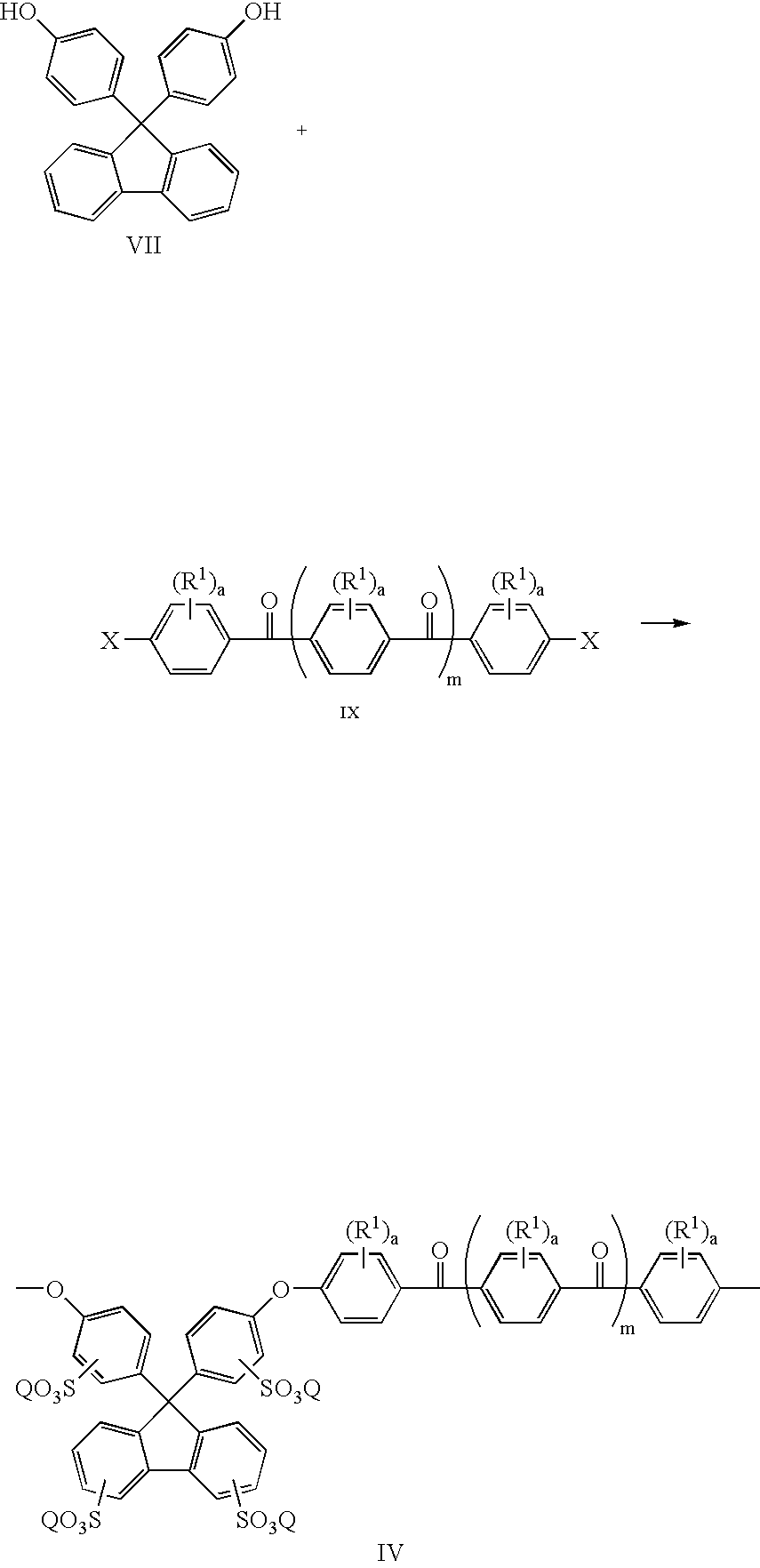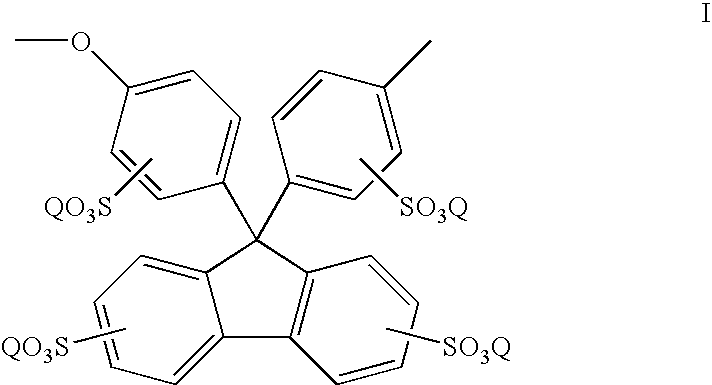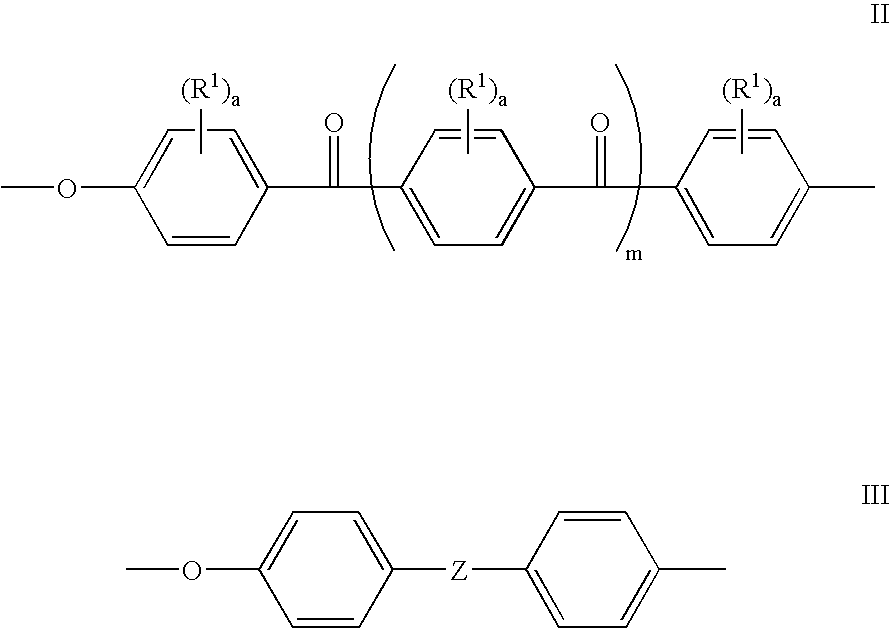Sulfonated polyaryletherketones
- Summary
- Abstract
- Description
- Claims
- Application Information
AI Technical Summary
Benefits of technology
Problems solved by technology
Method used
Image
Examples
example 1
Standard Procedure for Synthesis of the Polyaryletherketones
[0044] 4,4′-Difluorobenzophenone (2.182 g, 10 mmol), 4,4′-(9-fluorenylidene)diphenol (1.0512 g, 3 mmol), 4,4′-(hexafluoroisopropylidene) diphenol (2.3536 g, 7 mmol), dry DMAc (30 ml) and potassium carbonate (1.94 g, 14 mmol) were added into a three neck round bottom flask equipped with a mechanical stirred and a nitrogen inlet. Toluene (20 ml) was used as an azeotropic agent. The reaction mixture was heated at 155° C. for 15 hours, and then at 165° C. for 5 hours. The polymer solution became viscous and was cooled to room temperature and diluted with DMAc. The polymer was precipitated using a blender in a mixture of water and methanol. The precipitated polymer was collected by filtration, and washed extensively with de-ionized water and ethanol to remove salt, finally dried in a vacuum oven overnight.
example 2
Standard Procedure for Sulfonation of the Polyaryletherketones
[0045] Sulfonation was carried out by dissolving the above polyaryletherketone polymer (1.5 g) in concentrated sulfuric acid (20 ml), and stirring for the desired time at room temperature. After the reaction, the mixture was poured into ice water. The sulfonated polymer was collected by filtration, and washed with de-ionized water until the rinse water was at pH 6-7, and dried at room temperature for 2 days before drying in a vacuum oven at 80° C. for 24 hours.
example 3
Membrane Preparation
[0046] Dried sulfonated polyaryletherketone (1 g) was dissolved in DMSO (4 ml), then the solution was filtered using a glass fritted filter funnel under vacuum. The film was cast from polymer solution on a glass plate using a film applicator at 60° C., then dried at room temperature for 1 day, at 80° C. under vacuum overnight. The thickness of the film was about 1 mil.
PUM
| Property | Measurement | Unit |
|---|---|---|
| Humidity | aaaaa | aaaaa |
| Humidity | aaaaa | aaaaa |
| Humidity | aaaaa | aaaaa |
Abstract
Description
Claims
Application Information
 Login to View More
Login to View More - R&D
- Intellectual Property
- Life Sciences
- Materials
- Tech Scout
- Unparalleled Data Quality
- Higher Quality Content
- 60% Fewer Hallucinations
Browse by: Latest US Patents, China's latest patents, Technical Efficacy Thesaurus, Application Domain, Technology Topic, Popular Technical Reports.
© 2025 PatSnap. All rights reserved.Legal|Privacy policy|Modern Slavery Act Transparency Statement|Sitemap|About US| Contact US: help@patsnap.com



